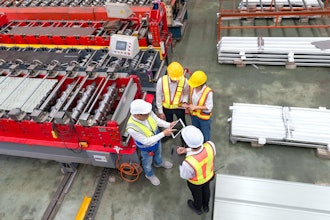Overall Equipment Effectiveness, otherwise known as OEE, is self-described as the “gold standard of measuring manufacturing productivity” and is seen as a tool that can help deliver continuous improvement. Quite frankly, it’s very difficult to make a case against that statement, which is why all production supervisors, operations managers, and financial controllers should be determined to maximize performance levels in this area.
Here’s everything you need to know about using Overall Equipment Effectiveness as a barometer of continuous improvement throughout the entire manufacturing process.
What Exactly Is OEE?
Overall Equipment Effectiveness is a strategy that scores three key areas of your company’s manufacturing processes out of 100 to deliver telling insights and identify room for improvement within the current strategy by pinpointing underlying losses. The three aspects it measures are;
- Availability: This essentially means the amount of time during production runs that is actually dedicated to the jobs at hand. Both planned and unplanned delays will bring your score down.
- Performance: This attribute focuses on the speed of production, meaning small stops and slow cycles will bring the score down. Other factors with equipment, personnel, and protocols could have an influence too.
- Quality: The quality metric relates to the final goods being produced. Any inaccuracies, defects, or faults that either require additional work or have to be trashed will impact the score.
The results of each three metrics are then added together before a mean average is taken to produce a final OEE score out of 100. Naturally, the aim of all operation managers and maintenance engineers is to get the perfect score.
How OEE Works
In addition to understanding the basic formula of Availability % x Performance % x Quality %, it is necessary to know how each of those three elements is calculated.
Availability
To calculate this percentage, you must first identify the duration of planned production time, which is the scheduled shifts. The next step is to calculate the total downtime of planned and unplanned stops. Following this, the calculations are;
- Total Downtime / Planned Productive Time x 100% = Downtime %
- 100% – Downtime % = Availability %
An example situation would be when you have a four-hour shift and it takes 10 minutes to complete each item. At 100% accuracy, you would be productive for the full 240 minutes. So, if you lose half an hour to downtime, your availability will be 210/240 x 100%. Or 87.5%.
Performance
The performance metric is calculated by taking the up-time and analyzing it against the actual output. Therefore, the calculation is.
- Actual output / maximum output x 100% = Performance %
As an example, if you have time to make 50 items but only manufacture 45 due to slow machinery or other faults, you will have 45/50 x 100%. Or 90%.
Quality
Finally, the quality metric is determined by taking the capture total production figure and analyzing it against the rejects or faulty goods. As such, the calculation is;
- Correct items produced / total items produced x 100% = Quality %
So, if you make 100 items in a shift but 8 are faulty, you will have 92/100 x 100%. Or 92%.
OEE software can monitor production on all three metrics before calculating their percentages, as well as the overall percentages. So, once established, the process is very easy to manage and review.
Why It Works
Overall Equipment Effectiveness is a strategy that works very well in the modern era, which is commonly referred to as industry 4.0, not least because we have intelligent machines. There are many reasons why it works, such as;
- Simplicity: OEE software looks at the three most important metrics (time, speed, and quality) to ensure that your operations are built for continuous improvement.
- Visualization: OEE clearly identifies where improvements are needed out of the three strands while also encouraging continuous improvement as you bid for 100%.
- Versatility: OEE software can be used in real-time with data shown on handheld devices for managers or sent directly back to the office.
- Honing: Rather than simply offering an insight into the operation as a whole, OEE can be built to monitor each machine.
- Motivation: Other performance-tracking systems make it easy to ignore the issues. OEE won’t let you rest unless you hit an overall OEE score of 100%.
Why Does It Matter?
The efficiency of the OEE strategy is fairly transparent. Before adopting the systems or installing OEE software, however, you need to confirm that it is a wise investment. Here are some of the reasons why OEE matters for your manufacturing processes;
Time Is Money
It’s the old cliché, but you cannot ignore it. Efficient manufacturing processes ensure that your time is used more effectively. Given that the global waste in the manufacturing sector is $8trillion, you cannot afford to be causing your fair share. Maximum OEE in the manufacturing arena will filter down throughout the firm.
More Products, More Revenue
When productivity is at the optimal rate, you will have more products to show for your time. In turn, this translates to more revenue opportunities while also offering the potential to adopt more competitive pricing.
Businesses Need To Be Responsive
The days of being able to persist with outdated or inadequate processes are long gone. OEE allows for real-time tracking on a per machine basis, which is something almost half of all managers believe is vital. The ability to correct issues ASAP ensures that your manufacturing processes stay on a positive trajectory.
Fewer Faults
When OEE rates are strong, the quality metric means that parts are good. This means fewer returns from customers, which can subsequently boost your bottom line directly and through maintaining a strong brand image. Moreover, it allows for more accurate forecasts and financial projections.
It Is Essential For Automation
The age of automation, or industry 4.0, is here. In fact, it is expected that over 40% of all manufacturing tasks will be automated by 2022. With fewer humans on-site, plant controllers and operations managers will need to have notifications. OEE is the ideal solution, not least thanks to its integrations with various handheld devices.
The Final Word
OEE is, quite simply, the best way to keep your manufacturing processes on track. It checks the quality of your production and output in real-time while speeding up the fault identification processes and rectification procedures in style.






















